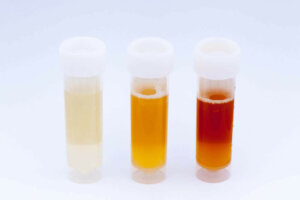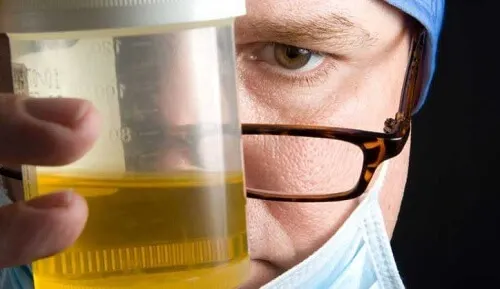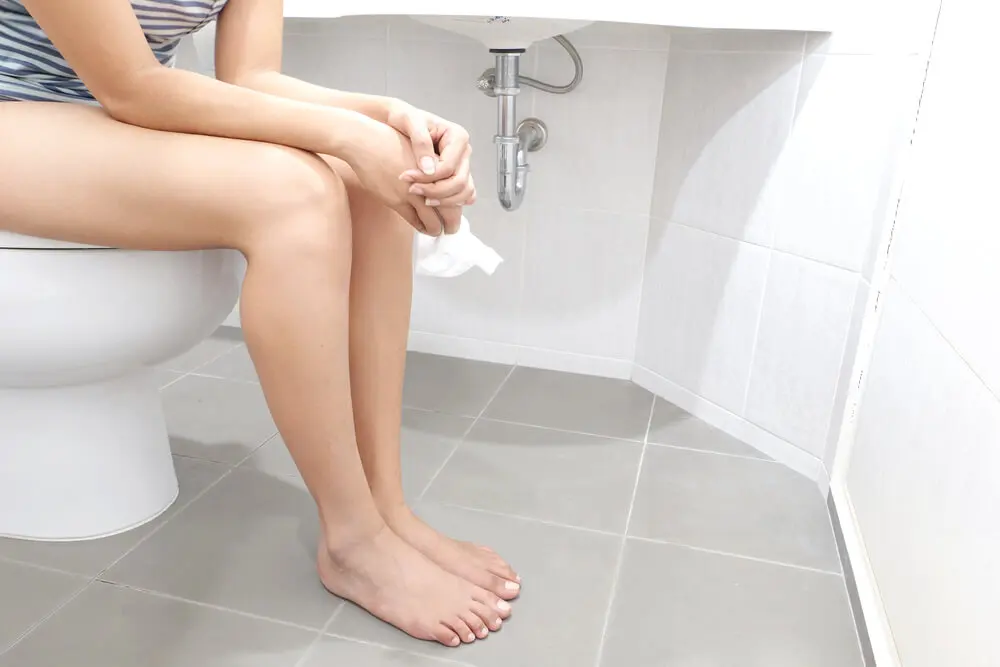7 Types of Urine That May Say Something Important About Your Health


Reviewed and approved by Doctor Carlos Fabián Avila
The types of urine – or, better said, the colors of urine – have been one of the most widely used ways of knowing a person’s state of health since ancient times. Thanks to these colors, it’s possible to study possible ailments of various kinds, not just renal or urinary issues.
We expel hundreds of types of waste through our urine that the body doesn’t need and that come from everything we eat and drink. Therefore, food and hydration are directly associated with the color of our urine.
The aspects that come to be considered are color, density, and odor. Of course, this is all at a superficial level, since a laboratory analysis is more comprehensive.
Let’s take a closer look!
The colors and types of urine
It’s very important to know, at least in general terms, what the color of your urine means about your health. This way, you can detect the signals that the body sends in case of discomfort so that you can inform the doctor about any irregularities.
1. Translucent or very clear types of urine
When urine has no color or is very clear, it’s an indication that you’re drinking much more water than you need, and it’s necessary to stop not to decompensate the salts of the body. While it’s true that the risks of drinking too much water are rare, no one is exempt from suffering from them.
If the color is too light and the person needs to urinate frequently, it may be water intoxication or overhydration. On the other hand, if the color is light, you feel the urge to urinate, but you haven’t had much fluid to drink, this could indicate diabetes.
2. Clear: The perfect color urine
A clear urine that doesn’t have a yellow hue indicates that your body is well hydrated. This color is usually taken as a sign of good health.
We think you’d like to read: The Benefits of Elevating Your Legs for 20 Minutes Per Day
3. Light yellow urine
Light yellow is also a sign of good hydration. However, if the color begins to darken to a deep yellow, amber, or brown, it’s a sign that you need to drink more water.
This characteristic color is due to a pigment called urobilin. Normal urine carries urobilin, which is diluted in water and creates the almost transparent yellow color that indicates that we’re properly hydrated.
4. Types of urine: Brown urine
The brown color may result from having eaten foods such as beans, beans, beans, rhubarb, or certain medications. In the most extreme case, this color can indicate a liver problem or severe dehydration.

5. Pink, red and related foods
Some red foods can cause alterations in the color of urine and cause it to have a pink or reddish hue. Eating blueberries, rhubarb, beets, or any reddish food may cause your urine to change to this shade.
However, this color may also be due to certain medications, or it may be blood. Generally, it should not be taken as an alarming sign. However, it may indicate hematuria (blood in urine) due to an infection.
On the other hand, recent studies state that urine can turn purple in the case of certain bacterial infections. Typically, this condition appears in people who use catheters or catheters. The purple coloration is due to the combination of red and blue pigments generated by bacteria.
6. Orange urine
Eating foods such as cloudberries, beets, carrots, or any orange food can cause the urine to turn this color momentarily.
In some cases, it may indicate a liver or bile duct problem, especially if accompanied by light-colored stools. Dehydration, which can cause urine to become concentrated and much deeper in color, can also cause the urine to be orange in color.
7. Types of urine: Light greenish blue
Green urine sometimes occurs during urinary tract infections are caused by pseudomonas bacteria. Other than this, it can also be due to the consumption of some food, especially if it has a blue or green coloring. For example, asparagus can cause urine to have a slightly green or blue hue.
On the other hand, a blue or greenish hue could also indicate that you are in the process of changing vitamins or medications. Among the medicines capable of giving this shade to urine are propofol, metoclopramide, and traditional Chinese medicine. If none of these two cases explain the blue-green color, consult your doctor.

Other aspects to bear in mind
Foam
If your urine is too foamy, it may indicate an excess of protein in the body or kidney disease that should be treated soon.
Cloudy appearance
A cloudy appearance may indicate that the urine contains a high level of phosphate, which could result from kidney stones. If your urine remains cloudy for a few days, it is a clear sign of a urinary tract infection, so it’s recommended to see a doctor as soon as possible.
A cloudy appearance is accompanied by an unpleasant odor and causes frequent urination. In the case of men, the cloudy or dirty urine colour may be due to semen remaining in the urinary tract.
Smell
Finally, when urine has an intense and unpleasant smell, this can result from both what has been consumed (asparagus, coffee, medicines, etc.) and infections. Therefore, if the smell is very strong, it’s recommended to see a doctor for an evaluation.
If the color of your urine worries you, talk to your doctor
Both the color and other aspects of your urine can be very useful in determining your state of health. This is especially true in terms of diet and hydration. That’s why it’s important not to miss the signs, check yourself regularly, and maintain good lifestyle habits.
All cited sources were thoroughly reviewed by our team to ensure their quality, reliability, currency, and validity. The bibliography of this article was considered reliable and of academic or scientific accuracy.
- Belasco, R., Edwards, T., Munoz, A. J., Rayo, V., & Buono, M. (2020). The effect of hydration on urine color objectively evaluated in CIE L* a* b* color space. Frontiers in Nutrition, 7. https://www.ncbi.nlm.nih.gov/pmc/articles/PMC7649145/
- Gallordo, P. (14 de junio del 2023). Orina espumosa: ¿qué significa? (2023). Mayo Clinic. Consultado el 1 de octubre del 2024. https://www.mayoclinic.org/es/foamy-urine/expert-answers/faq-20057871
- Harvard Health Publishing. (2020). Red, brown, green: Urine colors and what they might mean. Harvard Health Publishing. Consultado el 1 de octubre del 2024. https://www.health.harvard.edu/newsletter_article/red-brown-green-urine-colors-and-what-they-might-mean
-
Koratala, A., & Leghrouz, M. (2017). Green urine. Clinical Case Reports, 5(4), 549–550. https://www.ncbi.nlm.nih.gov/pmc/articles/PMC5378838/
- Mayo Clinic. (29 de junio del 2023). Porfiria. Mayo Clinic. Consultado el 1 de octubre del 2024. https://www.mayoclinic.org/es/diseases-conditions/porphyria/symptoms-causes/syc-20356066
- Reynolds, D., & Kollef, M. (2021). The Epidemiology and Pathogenesis and Treatment of Pseudomonas aeruginosa Infections: An Update. Drugs, 81(18), 2117–2131. https://www.ncbi.nlm.nih.gov/pmc/articles/PMC8572145/
- Suarez, C., Anastasopoulou, C., & Kathuria, P. (2024). Familial hypocalciuric hypercalcemia. StatPearls. https://www.ncbi.nlm.nih.gov/books/NBK459190/
- Torres, P., Helmstetter, J., Kaye, A., & Kaye, A. (2015). Rhabdomyolysis: pathogenesis, diagnosis, and treatment. Ochsner Journal, 15(1), 58–69. https://www.ncbi.nlm.nih.gov/pmc/articles/PMC4365849/
- Cleveland Clinic. (8 de noviembre del 2021). What the Color of Your Pee Says About You. Cleveland Clinic. Consultado el 1 de octubre del 2024. https://health.clevelandclinic.org/what-urine-color-means
This text is provided for informational purposes only and does not replace consultation with a professional. If in doubt, consult your specialist.








